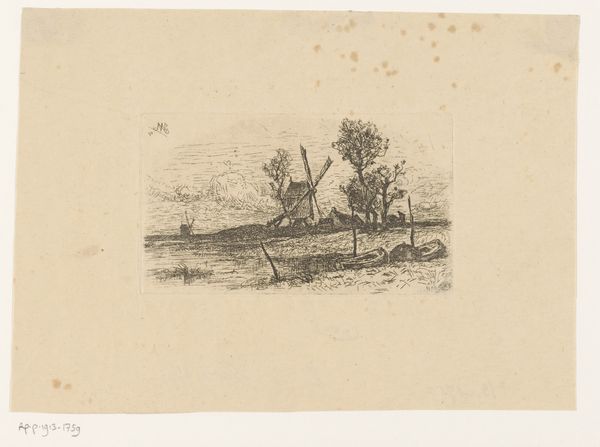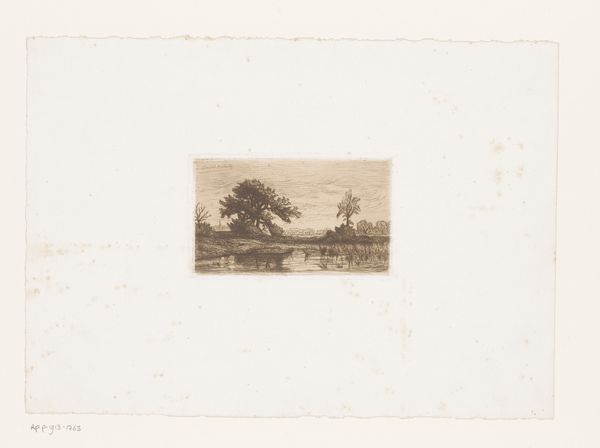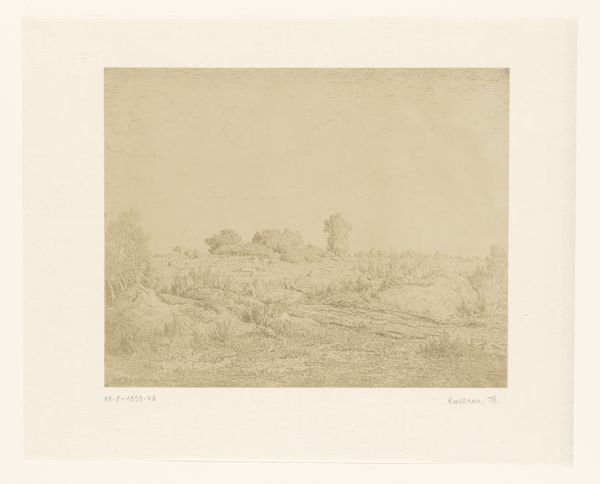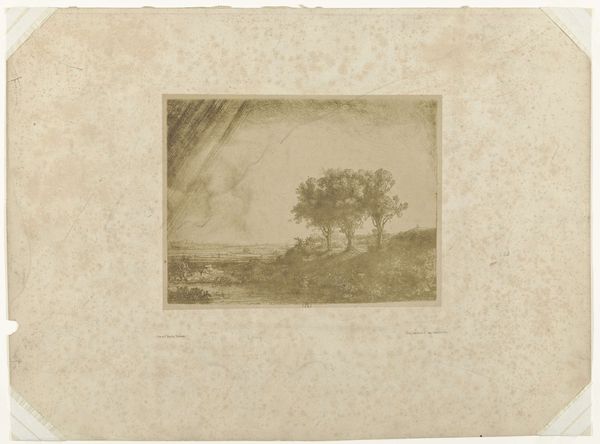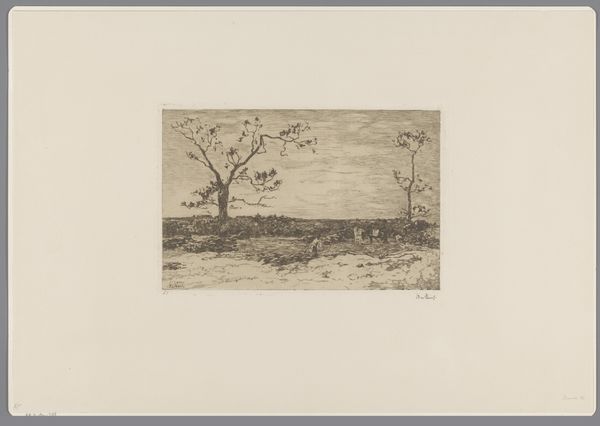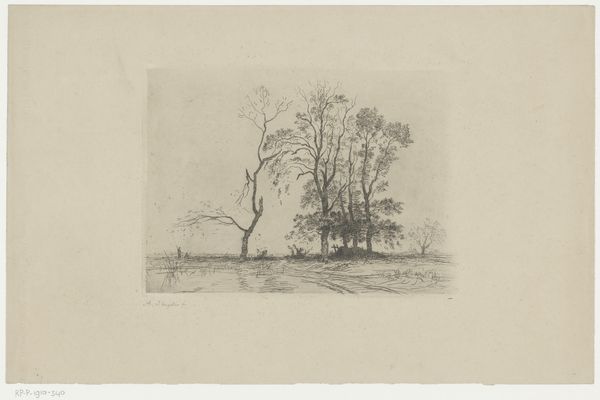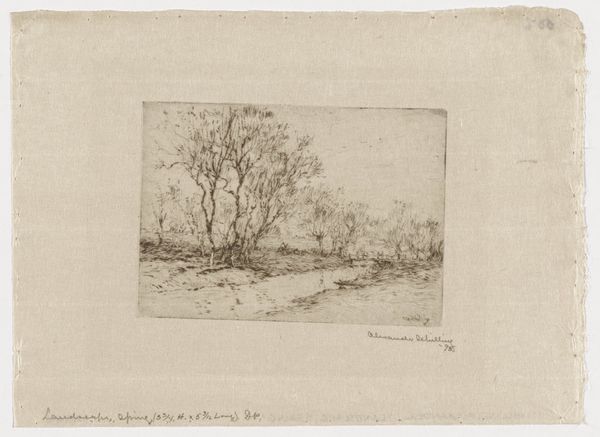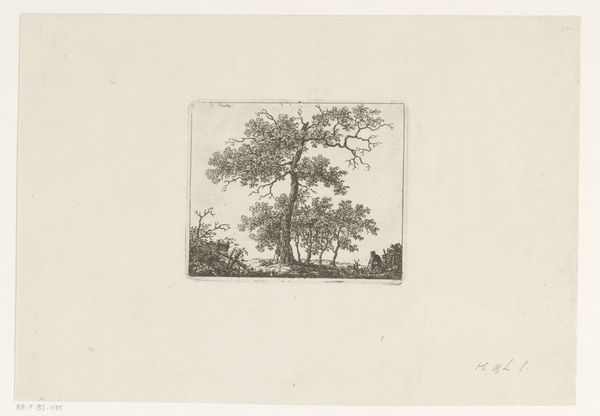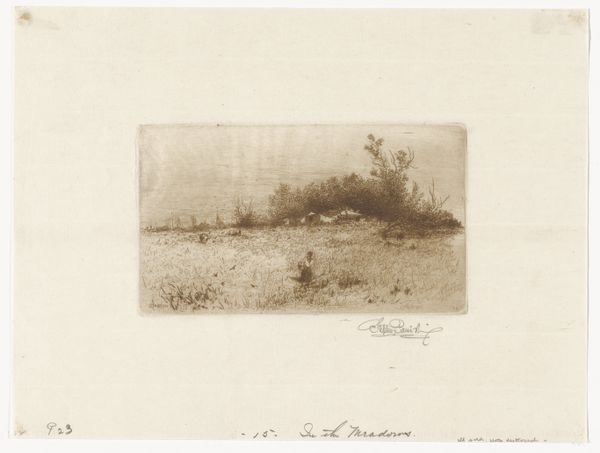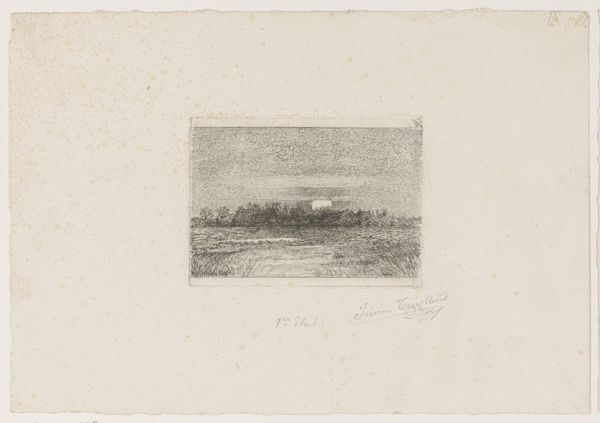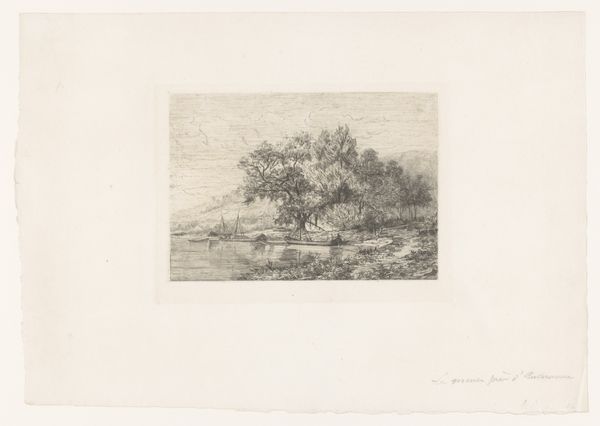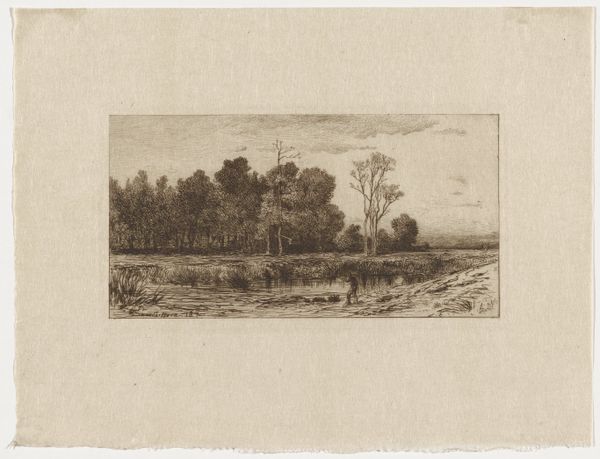
Dimensions: 2 5/8 x 3 7/16 in. (6.67 x 8.73 cm) (plate)6 1/8 x 8 3/16 in. (15.56 x 20.8 cm) (sheet)
Copyright: Public Domain
Alexander Schilling created this etching, "Along the Dyke," in 1894. It depicts a tranquil waterside scene, likely in Germany where Schilling was a professor at the Dusseldorf Academy. At the time, etching was experiencing a revival, embraced by artists seeking to capture everyday life with a renewed focus on realism. Schilling’s choice of a seemingly unremarkable landscape aligns with this trend. The dyke itself, a symbol of human intervention in nature, speaks to the ongoing negotiation between the built environment and the natural world. This work invites us to consider the social and economic forces that shaped artistic production in the late 19th century. The rise of industrialization and urbanization prompted a yearning for simpler times and a romanticized view of rural life, often reflected in art. To truly understand this etching, we can look at the Dusseldorf Academy's role in promoting landscape art, the cultural significance of dykes in the German landscape, and the broader art market that supported the etching revival. Art is always contingent on social and institutional context, and historical research can illuminate its deeper meanings.
Comments
No comments
Be the first to comment and join the conversation on the ultimate creative platform.
